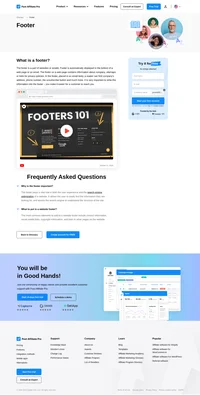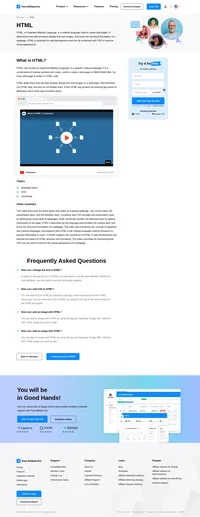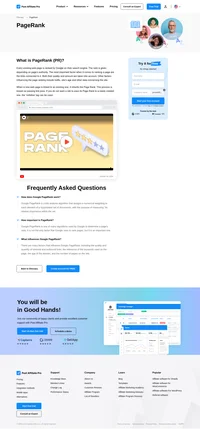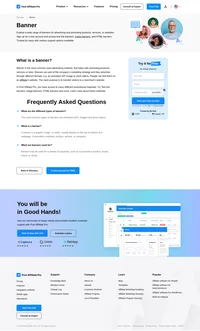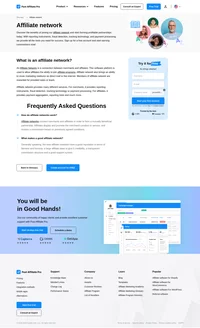What is a placement?
In the context of affiliate marketing, placement refers to the strategic positioning and distribution of affiliate content, such as ads, links, and banners, on digital platforms to optimize visibility and drive conversions. It involves selecting optimal locations within a website or digital platform to embed affiliate links and advertisements, thus maximizing the potential for traffic and sales. Placement plays a crucial role in the effectiveness of affiliate marketing campaigns, influencing both conversion rates and the overall user experience.
Importance of Placement in Affiliate Marketing
Placement is a cornerstone of affiliate marketing strategy, impacting how potential customers interact with affiliate links and ads. Effective placement can significantly enhance conversion rates by ensuring that ads are visible and engaging to the target audience. Conversely, poor placement can lead to low engagement and missed opportunities for affiliates to earn commissions. This underscores the necessity for affiliates to continuously refine their placement strategies, leveraging data-driven insights to adapt to changing consumer behaviors and digital trends.
Key Aspects of Placement in Affiliate Marketing
- Visibility and Accessibility: Placement must ensure that affiliate links and ads are easily visible and accessible to the audience. This involves positioning them in high-traffic areas of a webpage, such as above the fold or near the content that aligns with the affiliate offer. According to a comprehensive guide by Backlinko, employing SEO and CRO strategies can enhance visibility by ensuring that relevant content appears in search results, thus driving organic traffic to strategically placed ads.
- Relevance and Context: The context in which an affiliate ad is placed is crucial. Ads should be placed within content that is relevant to the product or service being promoted. This relevance can increase user engagement and trust, as the audience is more likely to find the ad useful. As highlighted in the strategies by Authority Hacker, employing proven copywriting techniques can further enhance the contextual relevance of affiliate ads, making them more appealing to the target audience.
- User Experience: Placement should enhance and not disrupt the user experience. Ads that are intrusive or interfere with content consumption can lead to a negative user experience, potentially driving users away. Strategic placement considers the flow of the webpage and ensures that ads integrate seamlessly. Xperiencify emphasizes the importance of creating visually compelling content widgets that blend with the website’s design, thus enhancing the overall user experience.
- Performance Tracking: Effective placement is data-driven. Affiliates should track the performance of different placements to understand which positions yield the highest click-through and conversion rates. This data can then be used to optimize future placements. Integrating analytics tools to monitor and analyze user interactions with affiliate links can provide valuable insights for continuous improvement.
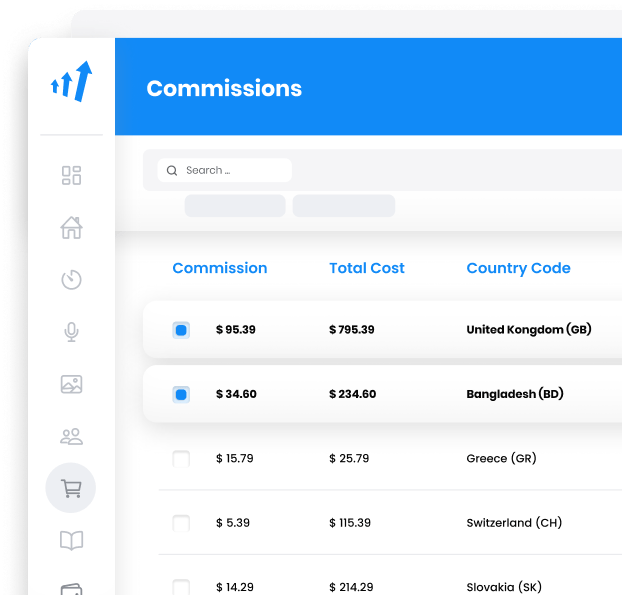
Types of Placements in Affiliate Marketing
Contextual Ad Placement
Contextual ad placement involves embedding affiliate ads within content that naturally aligns with the product or service being promoted. For example, a blog post about fitness routines might include affiliate links to workout equipment or supplements. This type of placement leverages the content’s context to enhance user engagement and conversion potential. The Backlinko guide suggests that affiliates can increase the effectiveness of contextual placements by aligning them with niche-specific content and utilizing relevant keywords to boost search engine rankings.
Above the Fold Placement
Above the fold refers to the portion of a webpage that is visible without scrolling. Placing ads in this prime real estate can improve visibility and engagement, as users are more likely to see these ads immediately upon visiting the page. Authority Hacker notes that emphasizing the consequences of not taking action can be a powerful motivator in above-the-fold placements, encouraging users to engage with the affiliate offer.
Native Advertising
Native advertising integrates affiliate ads into the content flow, making them appear as a natural part of the content rather than intrusive advertisements. This approach can enhance user engagement, as the ads are perceived as additional value rather than disruptions. Xperiencify highlights that using native ads effectively requires a deep understanding of the audience’s preferences and behaviors, ensuring that the ads provide genuine value.
Email and Newsletter Placement
Including affiliate links in newsletters or email campaigns can be highly effective, particularly when the content is tailored to the interests of the subscriber base. This form of placement leverages the direct and personal nature of email communication to drive conversions. The Authority Hacker article suggests offering exclusive discounts and bonuses in email campaigns to incentivize purchases through affiliate links.
Social Media Placement
Social media platforms offer unique opportunities for placement, allowing affiliates to reach a broad audience. Placing affiliate links in social media posts, stories, or profiles can drive traffic and conversions, especially when the content is engaging and shareable. As per the strategies outlined by Xperiencify, selecting affiliates with a strong social media presence and aligning promotions with trending topics can enhance the effectiveness of social media placements.
Seasonal and Event-Based Placement
Timing placements with seasonal events or trends can capitalize on increased consumer interest and spending during these periods. For instance, promoting tech gadgets during the holiday season or summer gear during the summer months can align with consumer purchasing patterns. Backlinko advises affiliates to plan their promotional calendars around key seasonal and event-driven opportunities to maximize impact.
Strategies for Effective Placement
- A/B Testing: Conducting A/B tests on different placements can provide insights into which positions yield the best performance. This involves testing various ad placements to determine which ones lead to higher click-through and conversion rates. Authority Hacker recommends using A/B testing to experiment with different ad formats and placement positions to identify the most effective combinations.
- Audience Analysis: Understanding the audience’s behavior and preferences can inform placement strategies. By analyzing how users interact with content and what type of ads they engage with, affiliates can tailor placements to better meet audience expectations. The Backlinko guide emphasizes the importance of segmenting audiences based on demographics and interests to deliver more personalized and relevant ad experiences.
- Continuous Optimization: Placement strategies should be continuously refined based on performance data. Regularly reviewing analytics and making adjustments can help maintain high conversion rates and optimize affiliate marketing efforts. As suggested by Xperiencify, affiliates should stay informed about industry trends and emerging technologies to adapt their strategies proactively.
- Integration with Content: Ensuring that placements are well-integrated with the surrounding content can enhance user experience and engagement. Ads should complement the content rather than detract from it, providing additional value to the user. Authority Hacker highlights the importance of disclosing affiliate links transparently to maintain trust and credibility with the audience.
Challenges in Placement
Despite its importance, placement in affiliate marketing presents several challenges:
Platform Limitations: Different platforms have varying capabilities and restrictions regarding ad placement. Affiliates must navigate these limitations to optimize their strategies. Authority Hacker recommends staying updated on platform policies and leveraging platform-specific tools to maximize placement effectiveness.
Ad Blindness: Users may become accustomed to ignoring ads, especially if they occupy predictable positions on a webpage. Overcoming ad blindness requires innovative placement strategies that capture user attention. Xperiencify suggests using dynamic and interactive ad formats to combat ad fatigue and increase user engagement.
Balancing Revenue and User Experience: While the goal of placement is to drive conversions, it must not come at the expense of user experience. Affiliates must balance the two to ensure long-term success. Backlinko advises affiliates to prioritize user-centric design principles, ensuring that ads enhance rather than disrupt the browsing experience.
Frequently Asked Questions
What is media placement in advertising?
Media placement is the process of selecting and securing advertising space in print, broadcast, and digital media outlets. It is a key component of media planning, the process of identifying and targeting the most effective media channels to reach the desired audience.
What is placement in digital marketing?
Placement in digital marketing is a paid advertisement appearing on a website or social media platform. The placement can be a banner ad, video ad, or text ad.
Explore Post Affiliate Pro's comprehensive Affiliate Marketing Glossary to enhance your industry knowledge with easy-to-understand definitions of essential terms. Perfect for marketers seeking to understand the fundamentals and advanced concepts, this glossary helps you master the language of affiliate marketing. Visit now to boost your expertise!
Discover the power of PageRank, Google's algorithm that evaluates link quality and quantity to determine web page authority. Learn how link building, SEO efforts, and strategic use of 'nofollow' tags influence rankings. Enhance your site's visibility by understanding and optimizing PageRank dynamics today!
Discover the power of banners in affiliate marketing with Post Affiliate Pro. Learn how these versatile advertising tools, from GIFs to videos, drive traffic to merchants' sites and boost your marketing strategy. Access a variety of promotional materials like text link and HTML banners to enhance your campaigns. Visit to explore more!


